close
Choose Your Site
Global
Views: 3 Author: Site Editor Publish Time: 2022-09-15 Origin: Site
Modified atmosphere packing machine
All kinds of food shelf life (for reference)

Modified atmosphere packing machine
Packing machine used for food preservation
Modified atmosphere packing technology will surely occupy a place in the era of intelligent packaging. As some food, fruit and vegetable preservation products have increasingly become the mainstream of food consumption, occupy an increasing share in domestic and foreign markets, the application of modified atmosphere packaging to food preservation can greatly extend the shelf life of food, so it has great great market potential.
气调包装机
Name: Modified atmosphere packing machine
Usage:Greatly extend shelf life of food
Apply to food preservation
Target:fruit, vegetable and delicatessen
Classification:Fully automatic modified atmosphere packing machine
Gas:CO2
Modified atmosphere packaging machine is a long-term product developed by developed countries such as Europe, America and Japan for efficient preservation of fruits, vegetables and cooked food. At the end of the last century and the beginning of this century, Chinese researchers conducted follow-up research on modified atmosphere preservation technology and made great progress. The modified atmosphere packaging machines produced in my country are advanced in technology, comparable to similar products in Europe and the United States and other countries, and have the advantages of being more suitable for Chinese people's eating habits and high cost performance.
In short, the modified atmosphere preservation packaging machine vacuumizes in the original packaging box and fills in a certain proportion of mixed gas (nitrogen, oxygen, carbon dioxide) to effectively preserve the packaged food. Modified atmosphere packaging machines are classified as:
Modified Atmosphere Packaging Machine for Boxes / Modified Atmosphere Packaging Machine for Bags
Fully automatic modified atmosphere packaging machine/semi-automatic modified atmosphere packaging machine In order to meet the operation requirements of food packaging production line, the modified atmosphere packaging machine should also have assembly line functions such as weighing, coding, and labeling.
The fresh-keeping principle of compound modified atmosphere preservation packaging machine
Compound modified atmosphere fresh-keeping packaging is also known as gas replacement packaging and internationally known as MAP packaging (Modified Atmosphere Packing). The principle of the composite modified atmosphere packaging machine is to use composite fresh-keeping gas (2-3 kinds of gases are mixed according to the characteristics of the food) to replace the air in the packaging box or packaging bag, change the external environment of the food in the box (bag), achieve inhibition the growth and reproduction of bacteria (microorganisms) and slow down the metabolism of fresh fruits and vegetables,so as to extend the shelf life of food
Modified atmosphere preservation gas is generally composed of CO2, N2, O2 and a small amount of special gases. CO2 gas has the effect of inhibiting the growth and reproduction of most spoilage bacteria and molds and is the main antibacterial component in the protective gas; O2 gas can inhibit the growth and reproduction of most anaerobic spoilage bacteria, maintain the color of fresh meat, maintain the aerobic respiration of fresh fruits and vegetables and keep fresh; N2 is an inert gas, which does not work with food. As a filling gas, it forms a composite fresh-keeping gas with CO2, O2 and special gases. For different foods, fruits and vegetables, the composition and proportion of the preservation gas are also different

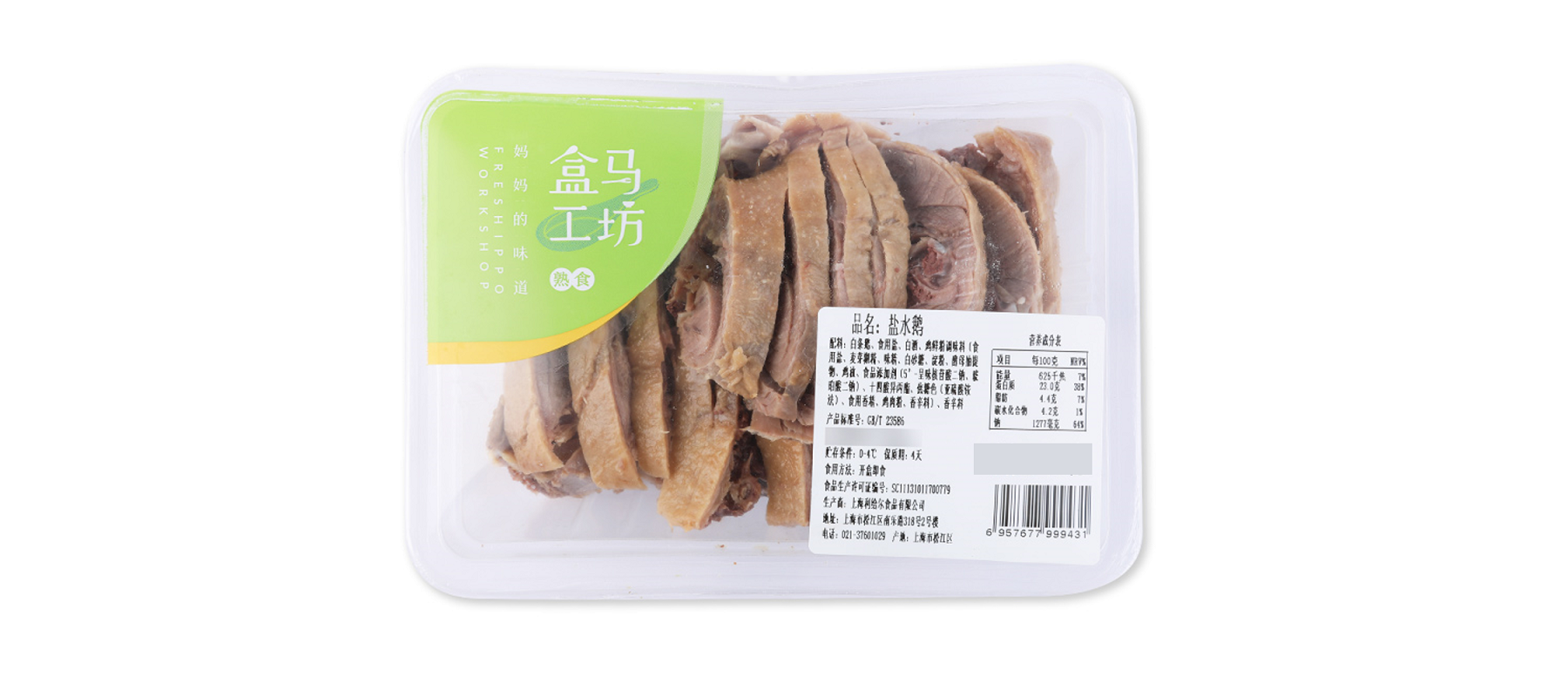
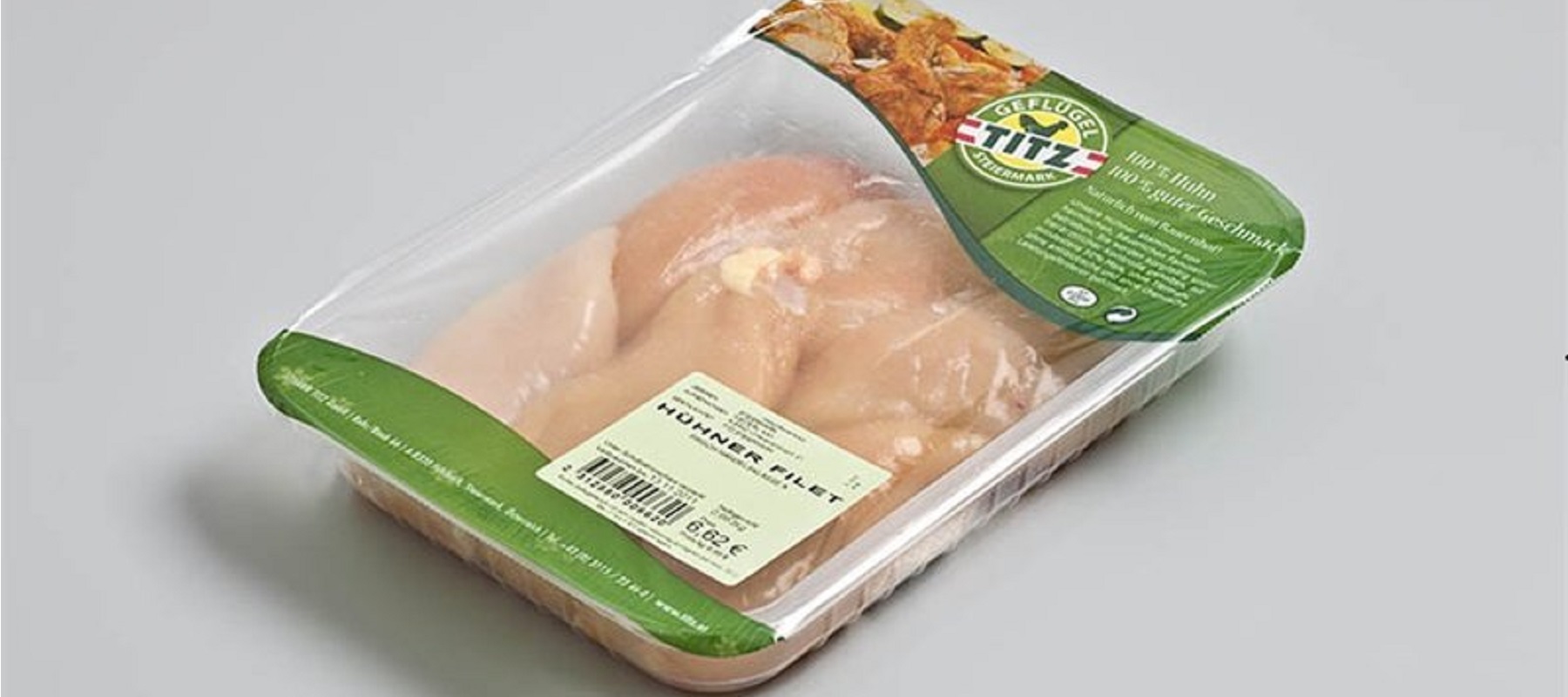
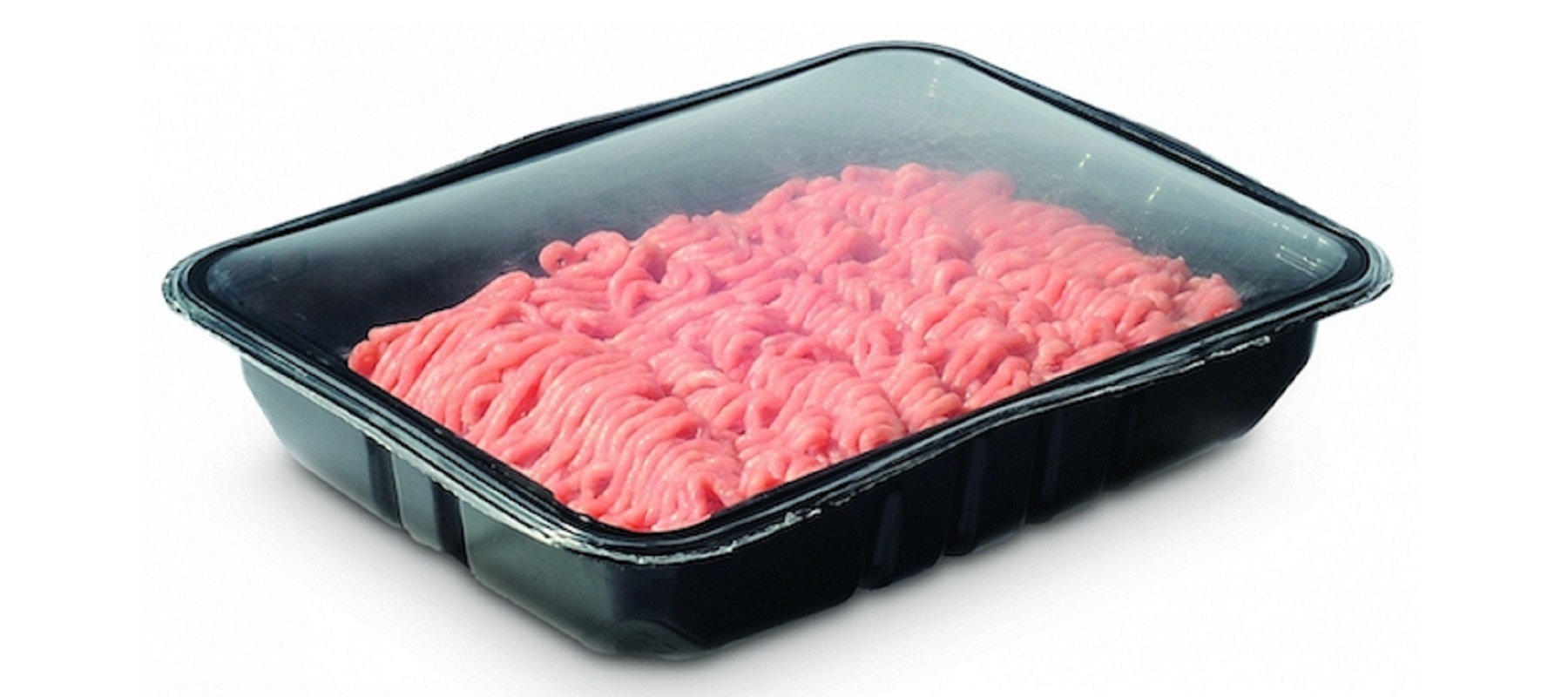
The key technology of modified atmosphere packaging machine
A qualified composite modified atmosphere fresh-keeping packaging machine has two key technical indicators that must meet the corresponding requirements. These two indicators are: firstly the gas replacement rate should be high, and secondly the gas mixing accuracy error rate should be low. Whether the quality of composite modified atmosphere fresh-keeping packaging equipment is qualified or not, it is necessary to use these two key indicators to judge. Modified atmosphere preservation gas is generally composed of CO2, N2, O2 and a small amount of special gases
Carbon dioxide has the effect of inhibiting the growth and reproduction of most spoilage bacteria and molds and slowing down the metabolism of fresh fruits and vegetables. It is the main antibacterial component in the fresh-keeping gas.
Oxygen can inhibit the growth of most anaerobic bacteria, maintain the color of fresh meat, maintain aerobic respiration of fresh fruits and vegetables and keep freshness
Nitrogen is an inert gas and does not work with food. As a filling gas, it forms a composite preservation gas with carbon dioxide, oxygen and special gases. Different foods, fruits and vegetables require different components and proportions of fresh-keeping gas.
The use of composite modified atmosphere packaging equipment for fresh-keeping packaging of food, fruits and vegetables requires a reasonable requirement for gas mixing accuracy error and gas replacement rate. In the standard of advanced composite modified atmosphere fresh-keeping packaging equipment in developed countries, the gas replacement rate is required to be more than 98%, and the error rate of the mixing accuracy of fresh-keeping gas is less than 2%. This is because the above two indicators play a crucial role in the preservation of food, fruits and vegetables. Examples are as follows
Example 1: When litchi is packaged in modified atmosphere fresh-keeping, the mixing ratio of the fresh-keeping gas is: O2 concentration ratio of 4%~6%; CO2 concentration ratio of 3%~5%, damage concentration of 8%; the rest is filled with N2; if the O2 concentration is low, anaerobic respiration will occur, resulting in lychee fruit fermentation and tissue necrosis; high O2 concentration or low CO2 concentration will inhibit lychee metabolism and shorten the preservation period; high CO2 concentration (>8%) will cause damage to the peel and fruit and accelerate the deterioration of lychee
Example 2: When packaging stewed vegetables (cooked food) with modified atmosphere fresh-keeping, the mixing ratio of the fresh-keeping gas is: nitrogen (N2) 64%-66%, carbon dioxide (CO2) 34%-36%, and the gas replacement rate is ≥98%. Since many microorganisms (bacteria) require O2 for their growth and reproduction, reducing oxygen levels can slow down the reproduction of bacteria (except for anaerobic bacteria). Experiments show that a reasonable mixture of N2 and CO2 forms a protective layer on the surface of food with broad-spectrum bacteriostasis, color retention and taste retention. In a low-oxygen environment, the stewed vegetables can be kept fresh. Therefore, when the error rate of gas mixing accuracy and the replacement rate cannot reach the index, its antibacterial and fresh-keeping effect is basically ineffective.
Advantages of modified atmosphere preservation over other preservation (quality retention) methods
The commonly used preservation (or quality retention) methods of food are mainly
(1)chemical preservation
(2)refrigeration to keep fresh
(3)Vacuum, high temperature sterilization to keep quality
(4)Vacuum, nitrogen filling to keep fresh
(5)Composite modified atmosphere to keep fresh
(6)Natural biological preservation
Among the above-mentioned six preservation (quality retention) technologies, chemical preservation uses chemical agents to prevent and inhibit bacteria, but consumers are limited by the side effects of preservatives.
The shortcoming of frozen preservation is that the taste of food changes after freezing.
The disadvantage of vacuum and high temperature sterilization is that it will greatly damage the unique taste and nutrition of food;
Nitrogen-filled packaging can better maintain the taste and nutrition of food, but the fresh-keeping period is very short. If you want to extend shelf life, high temperature sterilization after packing will be necessary. But the taste changes greatly.
Compound modified atmosphere preservation is a brand-new preservation technology developed on the basis of the above-mentioned traditions. It has certain requirements for the packaging environment. Its characteristic is that it does not need high temperature sterilization, so compound modified atmosphere preservation can ensure the original food taste and nutritional ingredient, and truly guarantee the original taste and appearance of the food.
Usage range
(1)Fresh fruit,vegetable and mushroom
(2)Various stewed dish, fried dish and fish meat product
(3)moon cake,cake and bean products
(4)Fresh food, livestock and poultry and seafood
(5)pickle and cured meat product
(6)Tea leaf, Chinese herbal medicine and native products
(7)All kinds of food that need to be kept fresh in the supermarket distribution center
All kinds of food shelf life (for reference)
Fresh fruits, vegetables and mushrooms are harvested, they still maintain the metabolic respiration activity of absorbing O2 and expelling CO2. If the O2 content in the package is reduced and the CO2 content is increased, the fruits and vegetables can maintain weak aerobic respiration without anaerobic respiration, the aging process of fresh fruits and vegetables is delayed, the metabolic rate is reduced, and the fresh-keeping period is prolonged. Preservation gas in modified atmosphere packaging of fresh fruits and vegetables consists of O2, CO2 and N2. The fresh-keeping period of modified atmosphere packaging is determined according to the variety and freshness of fruits and vegetables, such as strawberries, mushrooms, lychees, peaches, leafy vegetables, etc. The shelf life at 0-4°C is 10-30 days adopting low barrier film
Cooked food products: The preservation of Chinese and Western-style cooked food products of livestock and poultry, stewed vegetables, stir-fried vegetables, fast food and other cooked food products requires preservation and the original flavor. The fresh-keeping gas is generally composed of CO2, N2 and other gases. After modified atmosphere packaging, the fresh-keeping gas forms a protective film on the surface of the food, so as to achieve antibacterial and fresh-keeping, and maintain the nutritional content of the food, the original taste and shape. The fresh-keeping period is more than 5-10 days under 20℃; the fresh-keeping period is 30-60 days under the condition of 0-4℃ ; the fresh-keeping period at room temperature is more than 60-90 days after pasteurization (about 80℃). A high barrier film is required. The use of modified atmosphere packaging and natural biotechnology can achieve ideal results.
Baked food: The deterioration of barbecued food is mainly mildew, and preservation requires mildew prevention and flavor preservation. The preservation gas is composed of CO2 and N2. The fresh-keeping period of rice and flour food such as cakes and breads at room temperature is 15-60 days; the fresh-keeping period of moon cakes at room temperature is 30-90 days; the steamed bread packaging film needs to use a composite plastic film with high gas barrier properties to keep the gas concentration inside of the packaging. Combined with natural biotechnology, the preservation effect is doubled
Fresh livestock and poultry: The modified atmosphere packaging gas of fresh pigs, cattle and mutton is composed of CO2, O2 and other gases. High concentration of O2 oxidizes myoglobin in meat to oxymyoglobin, which can keep fresh meat bright red; CO2 is used for bacteriostasis and preservation. The shelf life at 0-4°C is 7-30 days. Fresh poultry uses CO2, N2 and other fresh-keeping gases, and the fresh-keeping period can reach 15-30 days. With natural biotechnology, it can be sold at room temperature for 2-5 days.
Fresh aquatic seafood: Fresh fish and other aquatic products are perishable foods with high moisture content. Anaerobic bacteria are one of the corruption factors of fresh aquatic products during low temperature storage, and produce toxins that are harmful to human health. The fresh-keeping gas consists of O2, CO2 and N2. The main factor of corruption of fatty fish is fatty oxidizing acid, and the protective gas is composed of CO2 and N2. For modified atmosphere packaging of fresh aquatic products, according to the variety and freshness, the preservation period at 0-4°C is 15-30 days. The packaging film needs to use a composite plastic film with high gas barrier properties to maintain the gas concentration in the packaging
Pickles and pickled products: Pickled foods are easily oxidized, mildewed and deteriorated in the air. During the pickling (soaking) process, an appropriate amount of natural biological agents are added. They can be kept fresh for 30-180 days at room temperature after modified atmosphere packing. The fresh-keeping gas consists of CO2 and N2
Modified atmosphere packaging shelf life list
modified atmosphere packaging | Shelf life in air | Storage temperature | O2 | CO2 | N2 | |
Fresh meat | ||||||
Beef、mutton、rabbit meat | 5-8(day) | 2-4(day) | -1℃ — +2℃ | 70% | 20-30% | 0-10% |
Pork | 5-8(day) | 2-4(day) | -1℃ — +2℃ | 70% | 20-30% | 0-10% |
Venison、Wild boar meat | 5-8(day) | 2-4(day) | -1℃ — +2℃ | 80% | 20% | / |
Raw haslet | ||||||
Heart、liver、tongue、belly | 4-8(day) | 2-6(day) | -1℃ — +2℃ | 80% | 20% | / |
poultry meat | ||||||
Chicken、duck、goose、dove | 10-21(day) | 4-7(day) | -1℃ — +2℃ | / | 30% | 70% |
Minced poultry meat | ||||||
Minced poultry meat、peeled poultry meat | 7-14(day) | 3-5(day) | -1℃ — +2℃ | 70% | 30% | / |
delicatessen processed meat | ||||||
bacon、hamburger、sausage、barbecue | 3-7(week) | 1-3(week) | 0℃ — 3℃ | / | 30% | 70% |
salami | ||||||
similar | 4-8(month) | 3-6(month) | 0℃ — 3℃ | / | 30% | 70% |
processed poultry meat product | ||||||
chicken roll、smoked chicken | 7-21(day) | 5-10(day) | 0℃ — 3℃ | / | 30% | 70% |
Raw fish and seafood | ||||||
flatfish、weever | 4-6(day) | 2-3(day) | -1℃ — +2℃ | 30% | 40% | 30% |
Raw fish and seafood | ||||||
Trout、carp、salmon、tunny | 4-6(day) | 2-3(day) | -1℃ — +2℃ | / | 40% | 60% |
、crustacean and mollusc | ||||||
clam、sea snail、crab、lobster、squid | 4-6(day) | 2-3(day) | -1℃ — +2℃ | 30% | 40% | 30% |
processed fish and seafood | ||||||
smoked fish、Rhopilema esculentum、hoisin sauce | 7-21(day) | 5-10(day) | 0℃ — 3℃ | / | 30% | 70% |
noodle | ||||||
macaroni、Lasagne、bean vermicelli | 3-4(week) | 1-2(week) | 0℃ — 5℃ | / | 50% | 50% |
dairy products | ||||||
butter、cream cake、cream cheese | 2-12(week) | 1-4(week) | 0℃ — 5℃ | / | 100% | / |
fresh dairy products | ||||||
slicing cheese | 2-1(week) | 1-4(week) | 0℃ — 5℃ | / | 30% | 70% |
processed vegetable | ||||||
Bean pepper、cold vegetable dish in sauce、veggie burger vagetable | 7-21(day) | 3-14(day) | 0℃ — 3℃ | / | 30% | 70% |
Fresh fruit and vagetable | ||||||
chili、olive、pear | 5-35(day) | 2-7(day) | 0℃ — 3℃ | 3% | 2% | 95% |
苹果apple、杏子apricot、胡萝卜carrot | 5-35(day) | 2-7(day) | 0℃ — 3℃ | 5% | 5% | 90% |
grapefruit、spinach、mango、strawberry | 5-35(day) | 2-7(day) | 0℃ — 3℃ | 10% | 10% | 80% |
nut and dry cargo | ||||||
nut、coffee、oatmeal、flour | 1-2(year) | 4-7(month) | normal temperature | / | / | 100% |
Modified atmosphere packaging is also called MAP or CAP abroad, and domestically called modified atmosphere packaging or replacement gas packaging, inflatable packaging. Commonly used gases are N2, O2, CO2, mixed gas O2+N2 or CO2+N2+O2 (ie MAP). Modified atmosphere packaging technology can be widely used in the preservation of various types of food, prolong the shelf life of food, and enhance the value of food.
Application of CO2 in food packaging
A Swedish company has introduced packing bags, containers and storage rooms filled with 100% CO2 gas to store meat. High concentration of CO2 can hinder the reproduction of microorganisms such as aerobic bacteria and mold, prolong the stagnation period and exponential growth period of microorganism growth, and play the role of anti-corrosion and mildew prevention. This method enables pork to be stored for 120 days without freezing, and longer storage time if it is re-pressurized. This method has attracted great attention from meat exporting countries such as the United States and Australia.
American experts use new technology to make plastic packaging materials with CO2. That is, using a special catalyst, CO2 and ethylene oxide (or propylene oxide) are mixed in equal amounts to make a new plastic packaging material, which is characterized by glass-like transparency and airtightness; similar to polycarbonate and polyamide Resin; it will not be completely decomposed into gas at 240°C; it has the characteristics of biodegradation and will not pollute the environment and soil.
Our country has successfully used nanotechnology to efficiently catalyze CO2 synthesis of degradable plastics. That is, the catalyst used to make plastics from CO2 is "smashed" to the nanometer level to realize the polymerization of catalytic molecules and CO2, so that each gram of catalyst can catalyze about 130 grams of CO2, and synthesize a new packaging material containing 42% CO2. As an
The application of nitrogen in food packaging
N2 is an ideal inert gas and has special effects in food packaging: it does not react chemically with food and is not absorbed by food, can reduce the oxygen content in the packaging, greatly inhibit the growth and reproduction of bacteria, molds and other microorganisms and slow down the oxidative deterioration and spoilage of food, so as to keep food fresh. Nitrogen-filled packaged food can also prevent the food from being squeezed and broken, the food sticking or shrinking into a ball, and maintain the geometric shape, dryness, brittleness, color, aroma and other advantages of the food. Nitrogen-filled packaging is rapidly replacing traditional vacuum packaging, and has been applied to fried potato chips and fries, oil-cooked foods, etc. Favored by consumers, especially children and youth, nitrogen-filled packaging is expected to be used in more food packaging.
The United States uses N2 to increase the strength of beverage cans made of thin aluminum materials. Before the beverage can be canned, nitrogen gas is dissolved in the beverage; after the beverage can is sealed, the nitrogen gas is released from the beverage, forming a pressure on the can wall which make the beverage can equivalent to an aerated can so as to increases the strength of the beverage can with a significant effect. The canned beverage will not be damaged during transportation, stacking or on the shelf, and will not affect the quality of the beverage. This method can also be used for beverage packaging made of polyester plastics
In the application of N2, the purity and quality of N2 must be paid attention to. The purity of nitrogen gas separated from compressed air by membrane separation or pressure swing adsorption can reach more than 99.9%. The purity of N2 used in food packaging must reach pure nitrogen level (ie safety level).
Application of Compound Gas in Packaged Food
The composite modified atmosphere fresh-keeping packaging is collectively referred to as MAP packaging internationally, and the modified atmosphere fresh-keeping gas used is generally composed of CO2, N2, O2 and a small amount of special gases. CO2 can inhibit the growth and reproduction of most aerobic spoilage bacteria and molds; O2 inhibits the growth and reproduction of most anaerobic spoilage bacteria and maintain the color of fresh meat, the oxygen-rich respiration and freshness of fresh fruits and vegetables; N2 is used as filling gas. The composition ratio of the composite gas is properly selected according to the type of food, preservation requirements and packaging materials to achieve the effect of high preservation quality of packaged food, good nutrient content, true original properties, and delaying the shelf life of preservation.
▲Modified atmosphere packaging of fresh fish and shrimp: The deterioration of fresh aquatic products and marine fish is mainly caused by bacteria that decompose trimethylamine oxide in fish meat to release stale trimethylamine, oxidative rancidity of fish fat, enzymatic degradation of fish meat, softening of fish meat. Bacteria on the surface of fish (aerobic Escherichia coli, Anaerobic Clostridium) produces toxins that endanger human health
The gas used for modified atmosphere packaging of fish is composed of CO2, O2, and N2. The concentration of CO2 gas is higher than 50%, which inhibits the growth of aerobic bacteria and mold without causing the fish to seep out. The concentration of O2 is 10%-15% to inhibit reproduction of anaerobic bacteria. The gills and viscera of fish contain a lot of bacteria, which need to be removed, cleaned and treated with disinfectant before packaging. Because CO2 is easy to seep out of plastic film, the packaging material of modified atmosphere packaging for fish needs to use composite plastic film with high gas barrier properties, which can be kept for 15-30 days at 0℃-4℃. British tuna is packaged with 35%-45% CO2 and 55%-65% N2 gas fresh-keeping packaging for a shelf life of 6 days
The deterioration of shrimp is mainly caused by microorganisms. Its intrinsic enzymatic action causes the shrimp to turn black. The use of modified atmosphere packaging can keep grass shrimp fresh. First, soak the shrimp in 100mg/L lysozyme and 1.25% sodium bisulfite preservative solution, and then fill the modified atmosphere packaging bag with 40% CO2 and 60% N2 mixed gas. The shelf life of the shrimp is longer than that of the control sample. It is extended by 22 days, which is 6.5 times of the shelf life of the control sample.
▲Modified Atmosphere Packaging of Livestock Fresh Meat
The modified atmosphere packaging of fresh pork, sheep, and beef meat should not only maintain the original red color of the fresh meat, but also preserve the freshness. The gas in the modified atmosphere packaging is composed of O2 and CO2. The gas composition will be different according to different meat variety. The gas composition of pork modified atmosphere packaging is 60%-70% O2 and 30%-40% CO2, and the shelf life at 0°C-4°C is generally 7-10 days (including cooling pork refrigerated at 0°C-4°C after slaughtering. After 24 hours, the ATP active substances were lost, the texture became soft and fragrant, and the palatability of the cooled pork was good). The modified atmosphere packaging of poultry meat is mainly anti-corrosion and fresh-keeping. The fresh-keeping gas is composed of CO2 and N2. The shelf life of poultry meat is 14 days when packaged with 50%-70% CO2 and 50%-30% O2 at 0℃-4℃
In the modified atmosphere packaging of meat, the use of high concentration of O2 can make the fresh meat keep bright red and more vivid. In an oxygen-deficient environment, the meat will be lavender. If fresh-keeping gas is composed of CO2 and N2, the meat will be lavender and shelf life can reach about 30 days. Fresh meat packaging materials also require the use of composite plastic packaging materials with high gas barrier properties
▲Modified atmosphere preservation packaging for baked goods and cooked food products
Baked foods include pastries, cakes, biscuits, breads, etc., and the main ingredient is starch. Food spoilage is caused by spoilage caused by bacteria and molds, rancidity caused by fat oxidation, and aging and hardening of starch molecular structure. The gas used in the modified atmosphere packaging of such food is composed of CO2 and N2. Cakes without cream can be kept fresh for 20-30 days at room temperature. Moon cakes and pudding cakes can be kept fresh for 60-90 days with high-barrier composite film at room temperature.
Microwave dishes, soy products and cooked meat products of livestock and poultry are charged with CO2 and N2, which can effectively inhibit the reproduction of coliform bacteria. It can keep fresh for 5-12 days at room temperature of 20°C-25°C, keep fresh for about 30 days at room temperature after conditioning and sterilization at 85°C-90°C, and keep fresh for 60-90 days at 0°C-4°C refrigerated temperature.
▲Fresh fruits and vegetables can still maintain the metabolic function of absorbing oxygen and expelling CO2 after harvesting, while consuming nutrients. Fruit and vegetable preservation is to reduce the oxygen content in the environment and low-temperature storage to reduce the progress of respiration, and to eliminate the CO2 produced by respiration to delay the ripening and aging of fruits and vegetables so as to achieve the effect of preservation. The modified atmosphere packaging gas of fruits and vegetables is composed of O2, CO2 and N2. The fruits and vegetables are packaged with breathable film, filled with low O2 and high CO2, replaced with mixed gas, and then sealed, so that the content of O2 in the package is lower than that of air and the accumulated CO2 is higher than that of air. Gas exchange through the film achieve a balanced atmosphere that is conducive to the fresh-keeping environment of fruits and vegetables and maintains weak aerobic respiration
Most fruits and vegetables are packaged in a mixed ratio of 5% O2, 5% CO2, and 90% N2, and have a long shelf life at low temperatures of 6°C-8°C. Modified atmosphere packaging is used for lychee preservation and freshness. Treating lychee fruit with 10%CO2+90%N2 and 20%CO2+80%N2 for 24hr can not only achieve the purpose of freshness, but also improve the good rate of the fruit, keep the peel red. Without affecting the nutritional composition, the combination of ozone treatment (4.3mg/M3 concentration) and high CO2 and low oxygen conditions by using edible thin film can prolong the shelf life of strawberries by 8-10 days.
American scientists used modified atmosphere packaging experiments on mangoes. They peeled and cut the mangoes into pieces and used oxygen packaging, mixed gas (N286%, CO210%, O24%) packaging and vacuum packaging respectively. Mangoes shelf life in mixed gas packaging is longest. During the storage period, the appearance of mangoes such as color and texture is good, and the damage caused by microorganisms is the most minimum
Modified atmosphere packaging is also suitable for keeping carved vegetables fresh. Carved vegetables is also known as cut fruits and vegetables, semi-processed fruits and vegetables, are new food processing products that cater to office workers. They are safe, fresh, nutritious and convenient, but they are easy to brown after being cut. The use of modified atmosphere packaging to reduce oxygen levels maximizes shelf life. For example, shredded lettuce in the United States prevents browning with 1%-3% O2, 5%-6% CO2 and 90% N2. Modified atmosphere packaging is also suitable for the preservation of peeled and sliced apples, potatoes, leafy vegetables and other fruits and vegetables. The development of packaging films suitable for the fresh-keeping effect of modified atmosphere packaging of fruits and vegetables is the key to broaden the ways of fresh-keeping of fruits and vegetables.
Tray lidding type
A tray sealer uses premade rigid trays that are sealed by top lid films. The air in the plastic rigid trays is evacuated from the sealing die and protective gas is filled into the trays (Vacuum – Fill method).
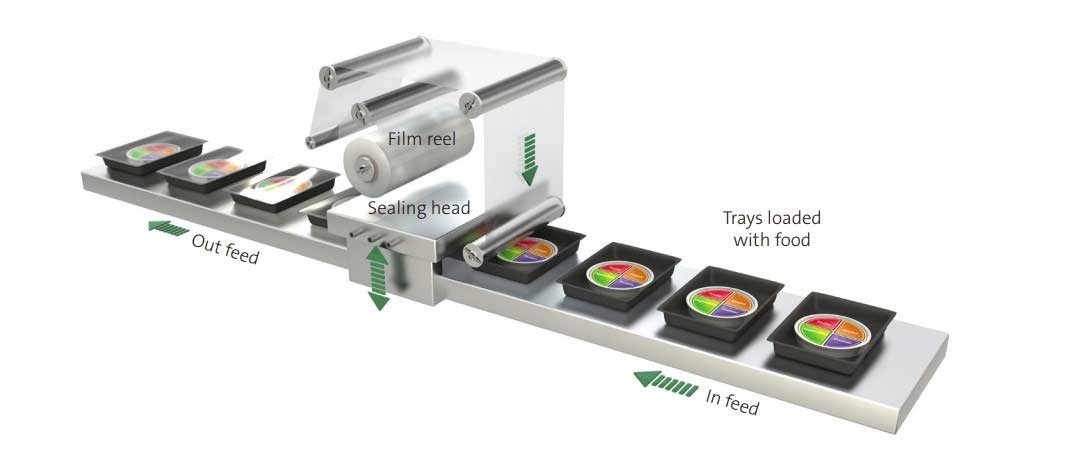
Thermoform fill seal type
Packaging material for the bottom forming film (base web) is unwound from the reel, then heated in the forming die and forming chamber, and formed into pockets or rigid trays. The thermoformed pockets/trays are loaded manually or automatically. The top sealing film (top web/lie film) covers the filled pockets/trays. The air is evacuated from the sealing die and sealing chamber, then protective gas is filled into the pouches/trays. Then the package is sealed by the application of heat and pressure. The finished packages are cut into individual packs, firstly cut by cross-cutting knives, then by longitudinal cutting knives.
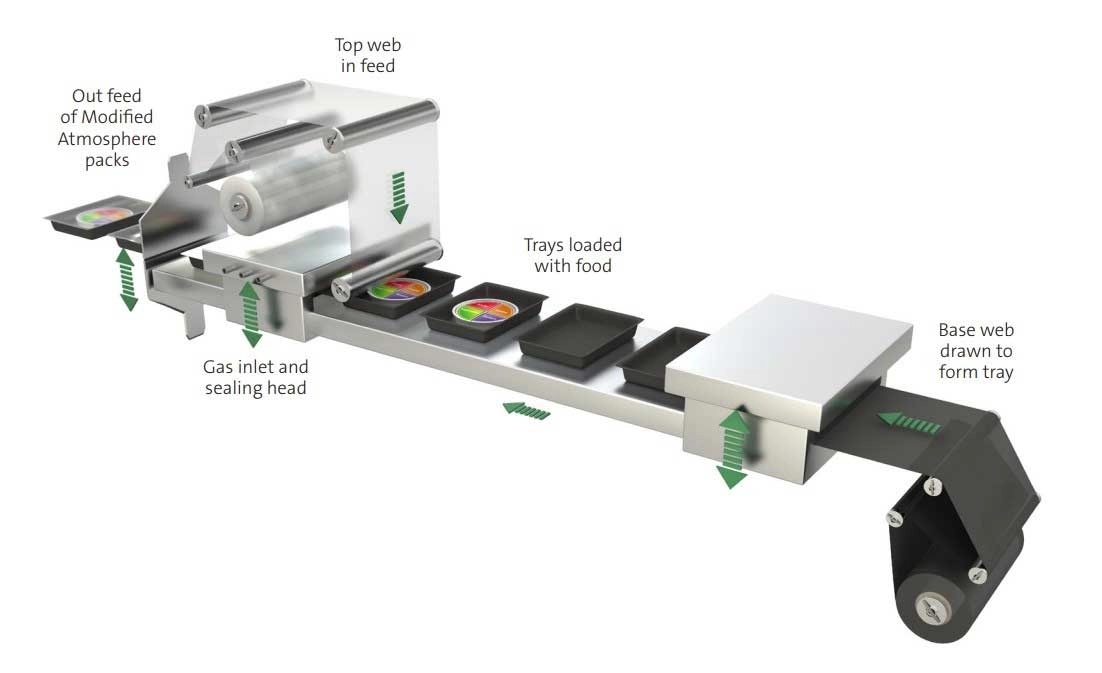
Related equipment for MAP modified atmosphere packaging
MAP modified atmosphere packaging machine
Gas mixer for filling of mixed air. If you need to fill in trays with mixed air of oxygen, carbon dioxide, and nitrogen, a gas mixer is necessary. Some of the gas mixer brands: WITT GAS, HODA, AMETEK MACON.
Gas analyzer: To analyze if the filled-in air ratio is correct. This is very important for the quality of MAP packaging.
The right plastic trays and sealing film
Compress air equipment to drive the machine’s pneumatic parts
Gas source of oxygen, carbon dioxide, nitrogen, or gas generator
Inkjet, labeling machine, metal detector
Any other necessary equipment according to your requirement